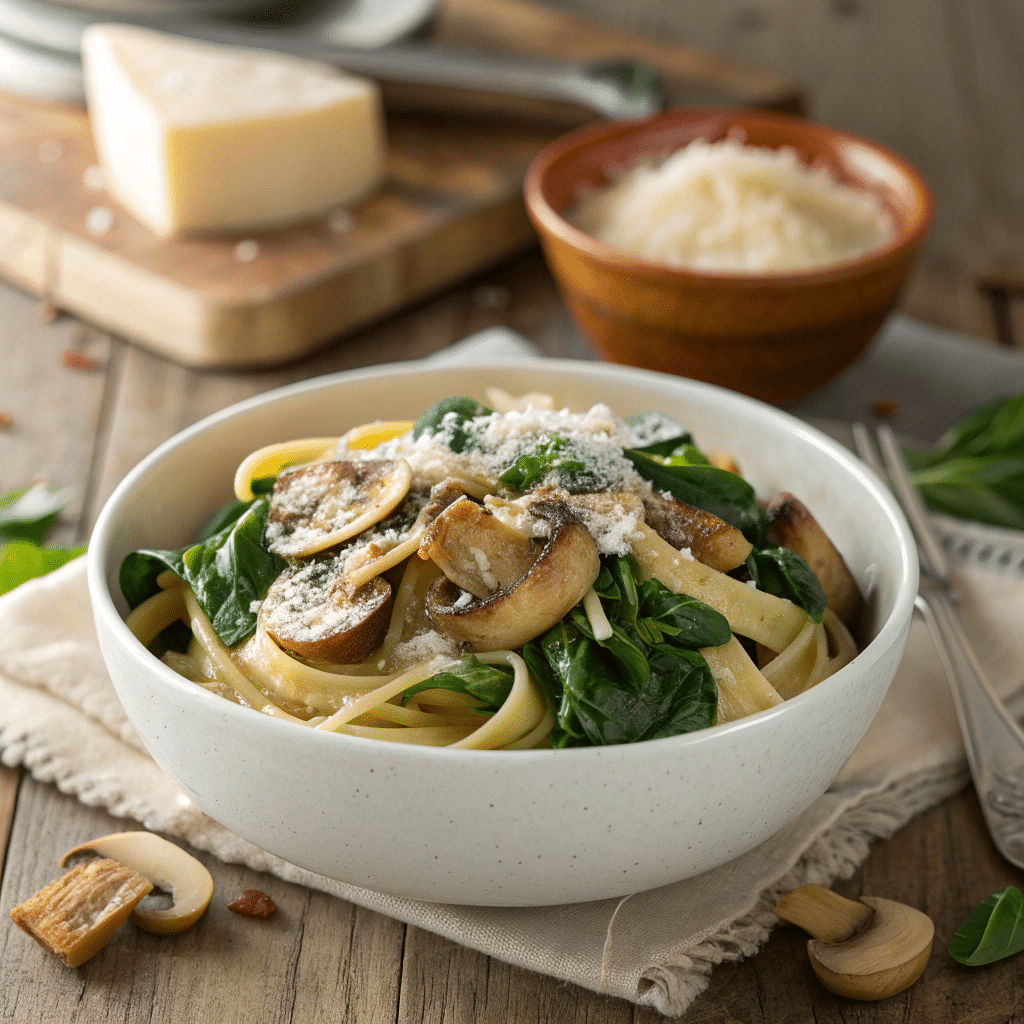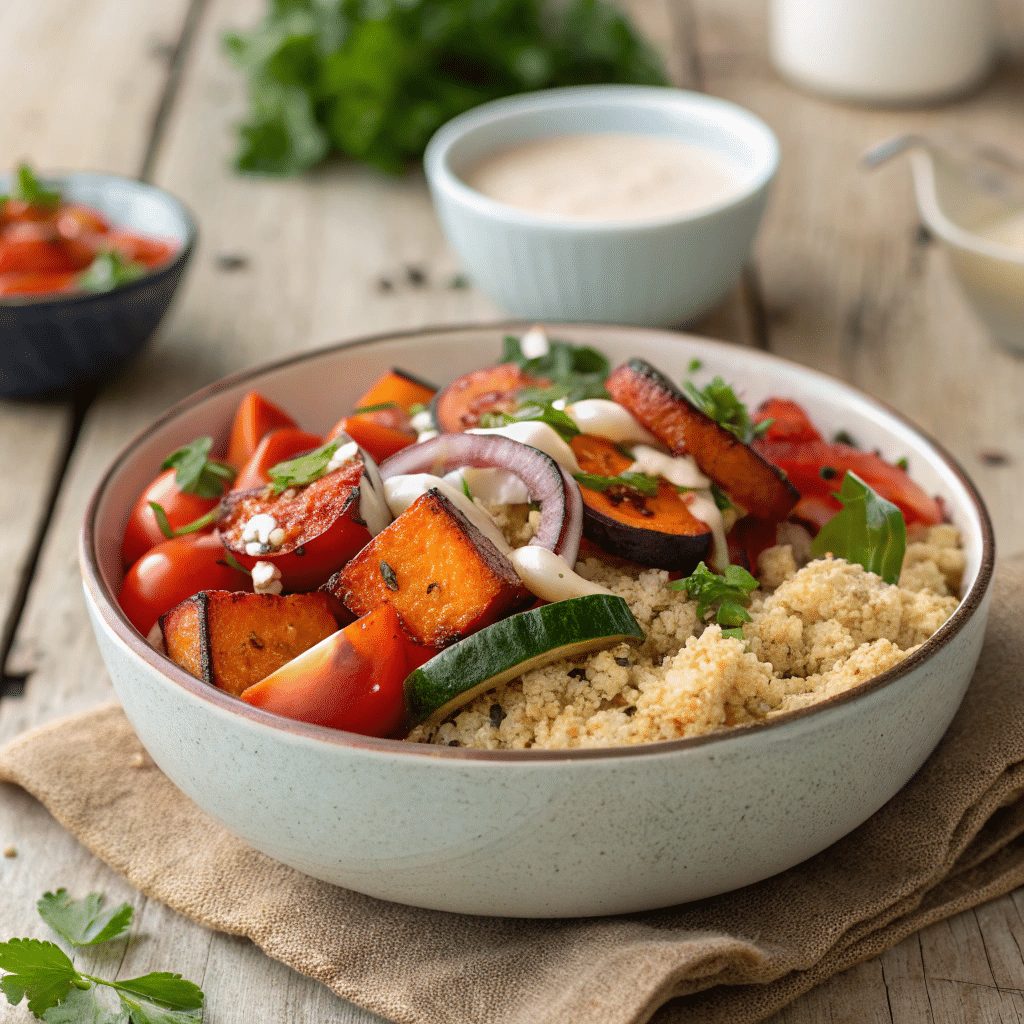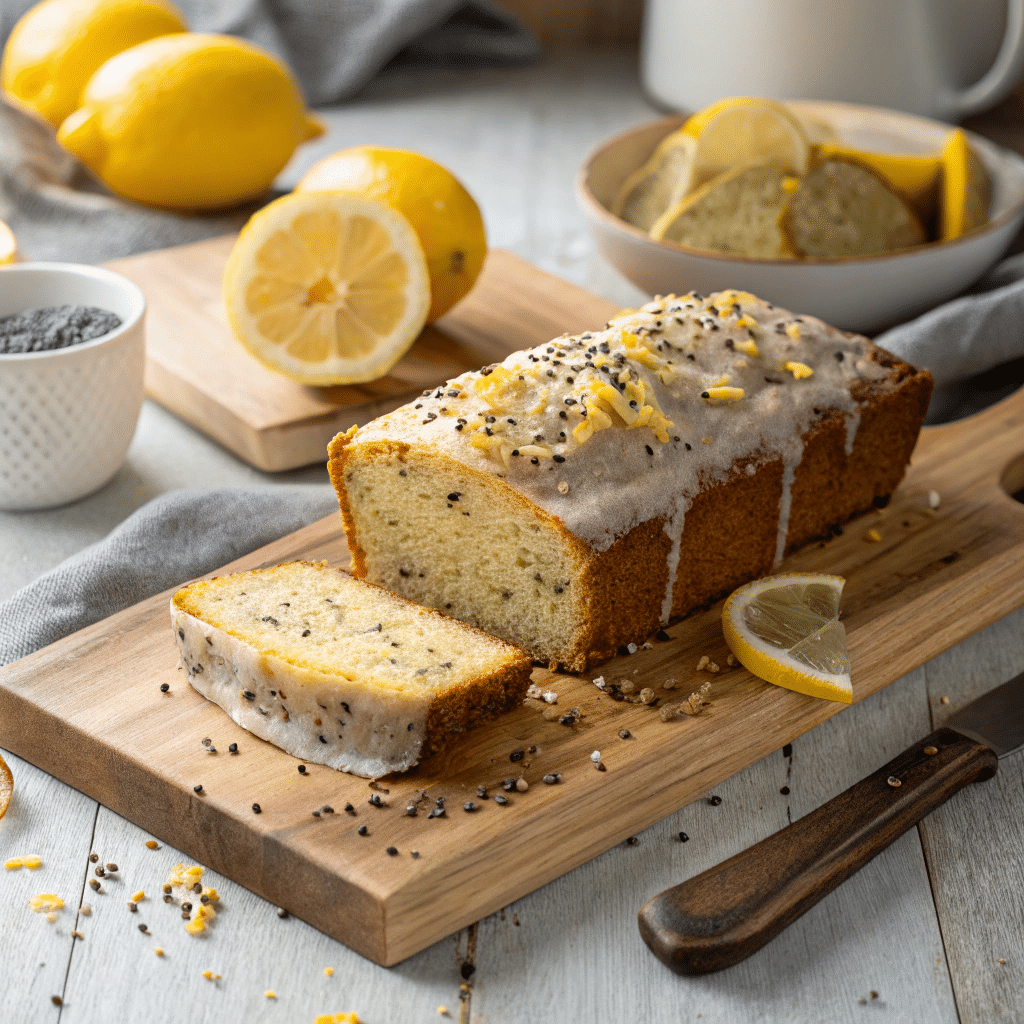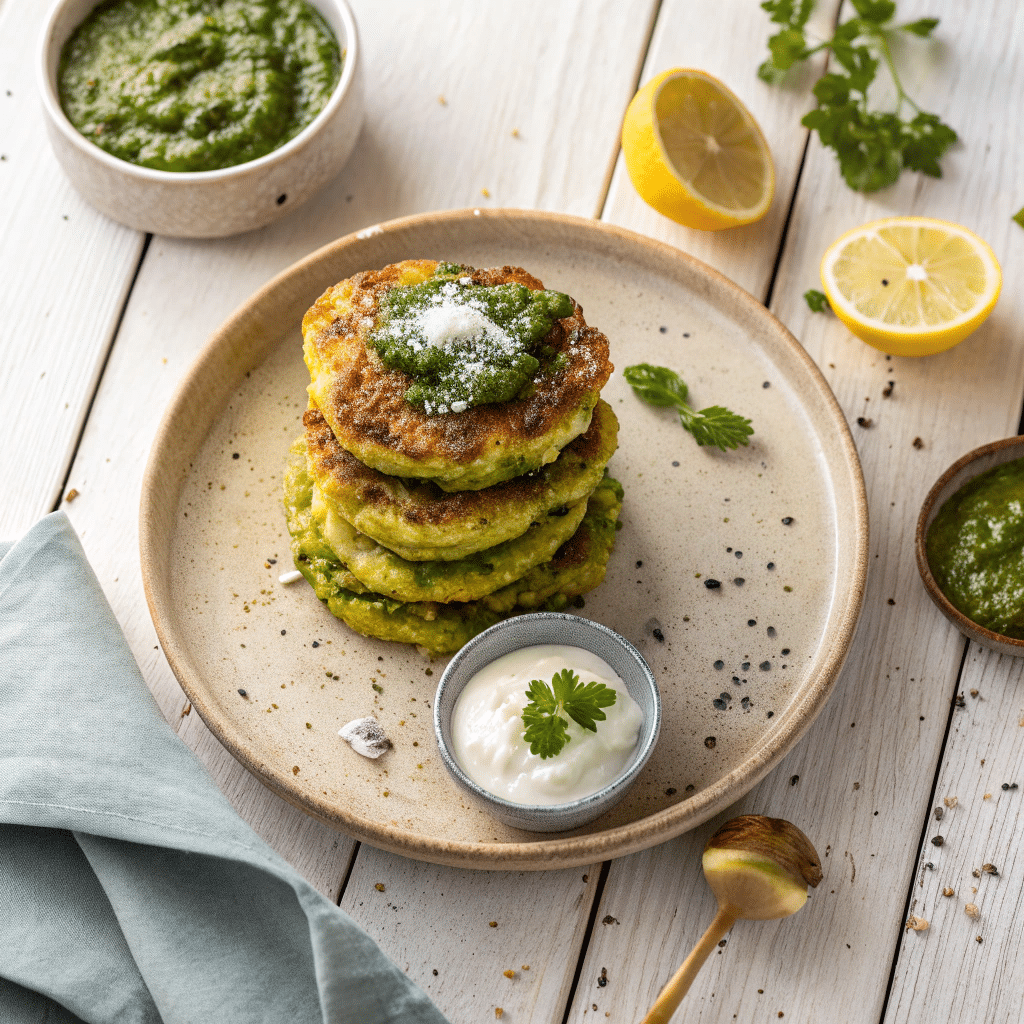If there’s one recipe that feels like edible art, it’s rice paper veggie spring rolls. They’re crunchy, fresh, and filled with colorful vegetables wrapped in delicate rice paper sheets. Add a creamy ginger peanut sauce for dipping, and you’ve got the perfect appetizer, light lunch, or snack.
I first discovered these while traveling, and what blew me away wasn’t just how pretty they looked—it was the balance of textures. Crisp veggies, soft rice paper, and that nutty dipping sauce made me a fan for life. And the best part? They’re surprisingly easy to make at home.
Why You’ll Love Rice Paper Veggie Spring Rolls
- They’re fresh, light, and perfect for warmer days.
- Naturally gluten-free when you use rice paper wrappers.
- Completely customizable with whatever veggies you’ve got in the fridge.
- Vegan-friendly but still hearty thanks to the peanut sauce.
- They look gorgeous—like rainbow veggies all tucked in edible glass.
Think of them as a blank canvas for your favorite vegetables.
Ingredients You’ll Need
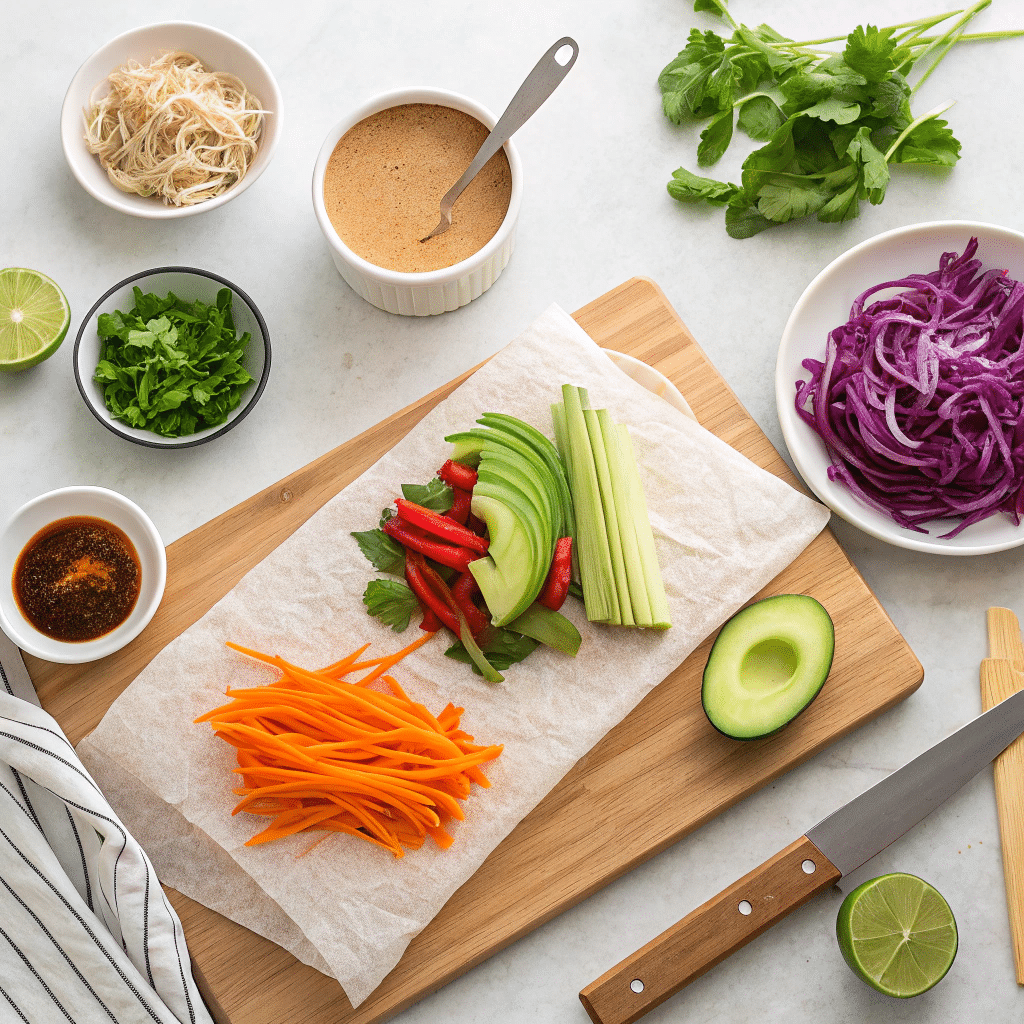
Here’s what I usually use when making vegetable spring rolls. Feel free to swap depending on what’s in season.
For the Veggie Rolls:
- 8–10 rice paper wrappers
- 1 cup shredded carrots
- 1 cup cucumber matchsticks (remove seeds for less water)
- 1 cup thinly sliced red cabbage
- 1 avocado, sliced
- 1 red bell pepper, thin strips
- Fresh herbs: mint, cilantro, or basil (pick your favorite)
- Lettuce leaves (butter or romaine works great)
Optional: tofu strips, cooked vermicelli noodles, or mango for a sweet touch.
For the Ginger Peanut Sauce:
- ½ cup creamy peanut butter
- 2 tbsp soy sauce (or tamari for gluten-free)
- 1 tbsp rice vinegar
- 1 tbsp lime juice
- 1 tbsp maple syrup or honey
- 1 tsp grated fresh ginger
- ¼ cup warm water (adjust to thin out sauce)
Whisk everything together until smooth and creamy.
Step-by-Step: How to Make Fresh Spring Rolls
Step 1: Prep Your Veggies
Slice everything into long, thin strips. Think matchsticks. This makes rolling easier and helps each bite feel balanced.
Step 2: Soften the Rice Paper
Fill a large shallow dish with warm water. Dip one rice paper sheet in for about 10 seconds—just until it softens. Don’t overdo it or it’ll tear.
Lay the softened wrapper on a damp kitchen towel or cutting board.
Step 3: Fill and Roll
Place a few lettuce leaves down first. Then layer in your veggies: carrots, cucumber, cabbage, avocado, and herbs. Don’t stuff it too full or it’ll burst.
Fold the bottom over the filling, tuck in the sides, then roll it up tight like a burrito. The rice paper will stick to itself and seal.
Step 4: Dip and Enjoy
Serve right away with the ginger peanut dipping sauce.
Tips for Rolling Success
- Work with one wrapper at a time so they don’t stick together.
- Keep your hands slightly damp to prevent rice paper from tearing.
- If your roll rips, don’t panic—just wrap it in another sheet of rice paper.
- Serve them fresh; rice paper dries out if left uncovered too long.
Variations You Can Try

- Rainbow Spring Rolls: Pack in as many colorful veggies as possible. Think purple cabbage, yellow bell peppers, and even pink radishes.
- Vegan Rice Paper Rolls with Dipping Sauce: Stick to veggies and peanut sauce, or add marinated tofu for extra protein.
- Gluten-Free Spring Rolls Rice Paper: Use tamari instead of soy sauce in the dipping sauce.
- Tropical Twist: Add mango or pineapple slices inside for a sweet surprise.
- Spicy Kick: Toss veggies with a little sriracha before rolling.
Storing Leftovers
Rice paper veggie rolls are best enjoyed fresh, but you can store them for a short time:
- Wrap each roll in plastic wrap or damp paper towels.
- Place in an airtight container.
- Keep in the fridge for up to 2 days.
The peanut sauce will last about a week in the fridge.
Serving Ideas
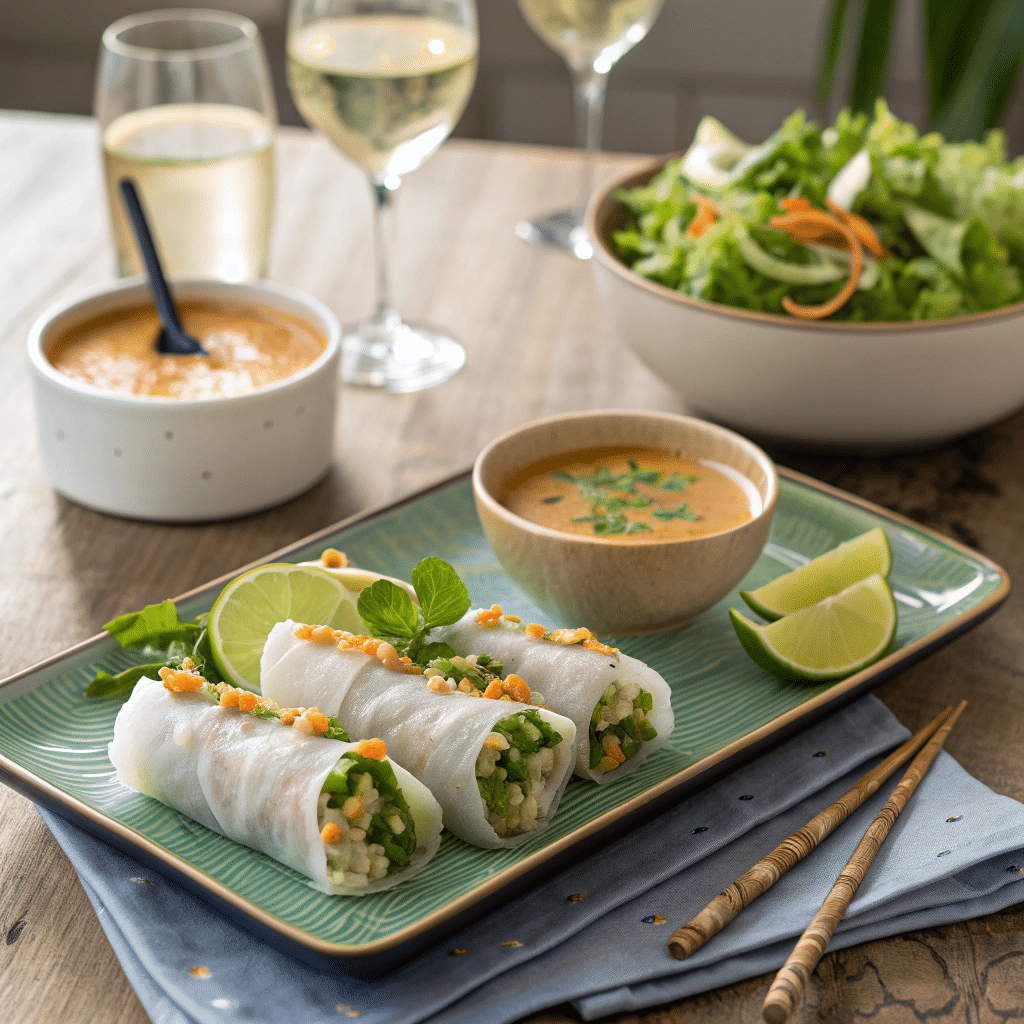
- Serve as an appetizer at summer gatherings.
- Pack for a light office lunch (keep sauce separate).
- Pair with miso soup or a fresh salad for dinner.
- Slice into halves or thirds and arrange on a platter for parties.
They’re versatile, vibrant, and always a crowd-pleaser.
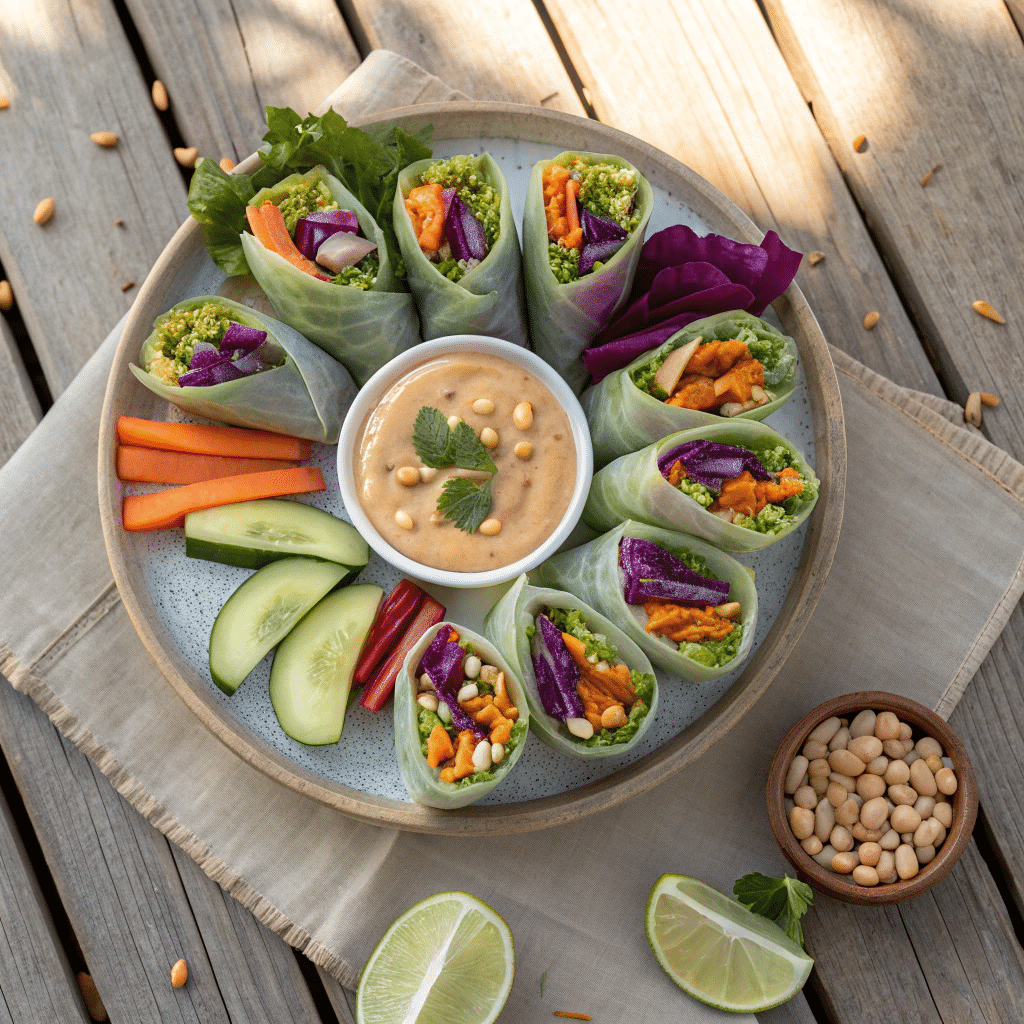
Rice Paper Veggie Spring Rolls with Ginger Peanut Sauce
Ingredients
Method
- Slice all vegetables into thin, long strips. Keep everything ready in small bowls or on a tray.
- In a bowl, whisk together peanut butter, soy sauce, rice vinegar, lime juice, maple syrup, and grated ginger. Slowly add warm water until smooth and creamy.
- Fill a large shallow dish with warm water. Dip one rice paper sheet in for about 10 seconds until softened. Place on a damp kitchen towel or cutting board.
- Place a lettuce leaf first, then layer carrots, cucumber, cabbage, bell pepper, avocado, and herbs. Add optional noodles, tofu, or mango if using.
- Fold the bottom of the wrapper over the filling, tuck in the sides, then roll tightly like a burrito. Repeat with remaining wrappers.
- Arrange spring rolls on a plate and serve with the ginger peanut sauce. Enjoy fresh.
Notes
- Best eaten fresh the same day. If you store them, wrap each roll in damp paper towels and place in an airtight container in the fridge for up to 2 days.
- You can swap peanut butter with almond butter or sunflower seed butter if you need a nut-free version.
- If your rice paper tears, just wrap the roll in another sheet—it works like a patch.
FAQ: Rice Paper Veggie Spring Rolls
1. Can I make spring rolls ahead of time?
Yes, but wrap them individually and refrigerate. Serve within 24–48 hours for best texture.
2. What’s the difference between spring rolls and summer rolls?
They’re often used interchangeably. These fresh, rice paper veggie rolls are sometimes called summer rolls to distinguish them from fried versions.
3. Can I make them without peanut sauce?
Absolutely. Try hoisin sauce, sweet chili sauce, or a light soy dipping sauce instead.
4. Do I need noodles inside?
Nope. Some recipes add vermicelli noodles for bulk, but I prefer keeping them veggie-forward.
5. Are rice paper wrappers gluten-free?
Yes! Most are made with just rice flour and water, making them naturally gluten-free.


